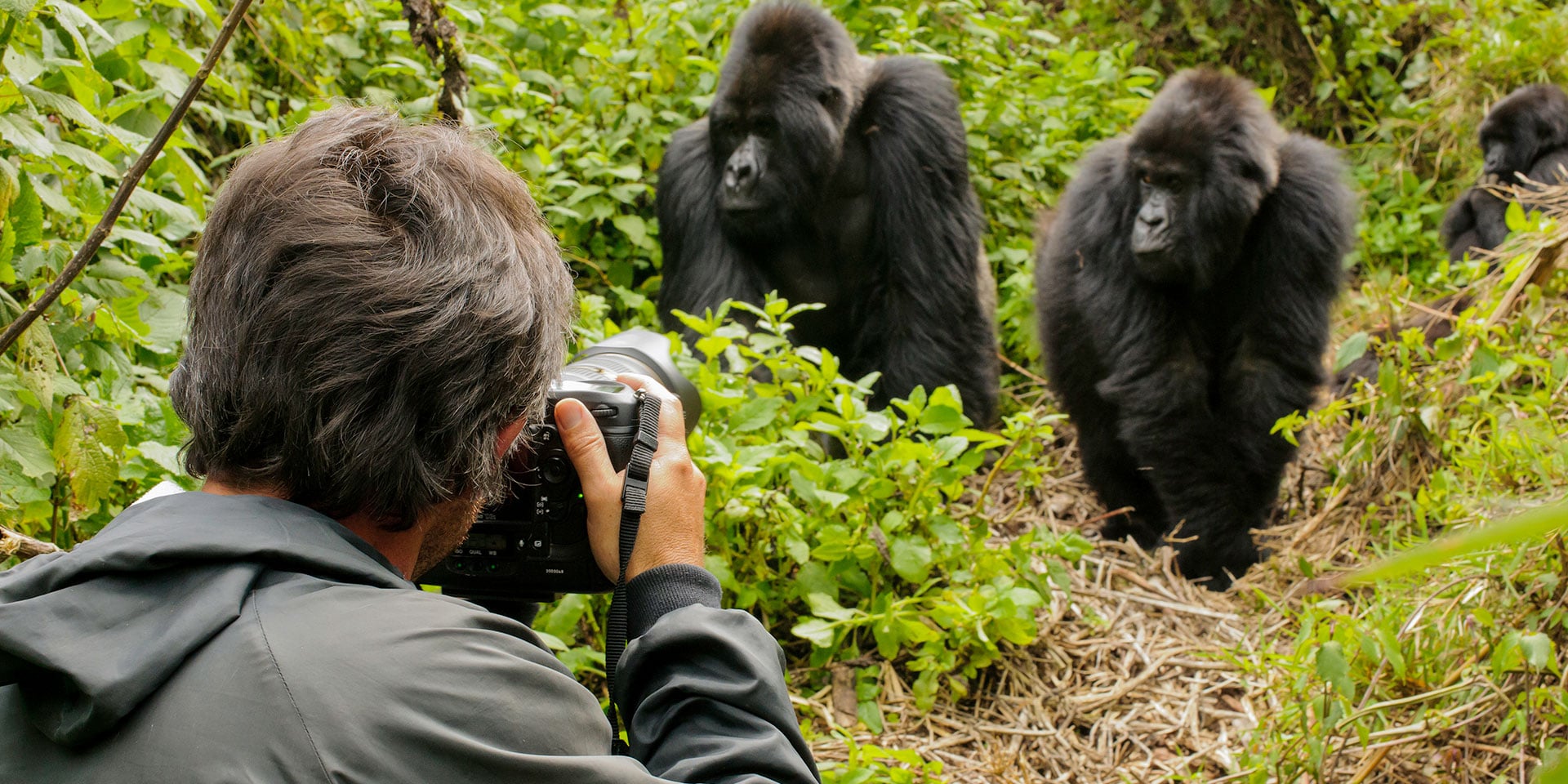Rwanda is home to some of the most precious wildlife and ecosystems the world has ever seen. The country’s government, along with its local communities, doesn’t take this gift lightly.
From the banning of plastic bags to many conservation projects and even mandatory cleaning days known as “umuganda” in the local language of Kinyarwanda, the small but mighty East African nation does everything to protect its environment and the animals living in it.
The good thing is the rise of tourism hasn’t negatively affected the country’s green initiatives. If anything, it has pushed the nation to enact and meet high-quality sustainable standards — and that leaves visitors with a chance to discover ample eco-friendly experiences.
Go to the Gorillas

There are only about 1,000 mountain gorillas left in the world, and some of them live in Rwanda’s Volcanoes National Park in the northern part of the country. Don’t miss out on the opportunity to take guided hikes on the park trails and see these magnificent creatures up close.
Illegal gorilla poaching has been a major threat to the population, so the Rwandan government has many rules in place to protect the endangered species. In addition, the park has plenty of trekking limitations in place to ensure the gorilla families aren’t disturbed in their natural habitats.
First, while the length of hikes and the amount of time it takes to complete them vary depending on how quickly you and your guide can track down the gorillas, visitors are only allowed to observe the wild animals for no longer than one hour.
Second, visitors must stand at a distance and cover their mouths to refrain from spreading harmful diseases. Moreover, there are just 80 permits issued daily to avoid overcrowding the gorillas’ space. Keep this in mind and plan ahead to book a tour, as spots quickly fill up.
Pro tip: The rare golden monkey and hundreds of unique birds can be found alongside the gorillas in the park, so be on the lookout for all kinds of creatures.
Relax at Lake Kivu
Once you descend from the volcanoes, take a break by Lake Kivu. Rwanda may be landlocked, but don’t overlook this large body of water that borders Congo. The coastal town of Gisenyi, where lots of foreigners like to jet ski and take boat rides, is the most popular place to visit and should be at the top of your list.
It’s important to note that the lake emits natural methane into the air. The government teamed up with several companies to clear the skies of any toxic chemicals and to prevent eruptions by extracting methane gas from the lake.
This extracted gas is then sold to locals for electricity. It has become an unexpected source of energy, as many remote communities don’t have easy access to power.
Fall in Love with Nyungwe
Nyungwe Forest National Park is a national treasure in Rwanda, but it wasn’t always treated this way. The government once had very little control over the territory, which resulted in forest fires, land disagreements and an overall chaotic atmosphere.
Today, however, there are major efforts to restore the forest, transforming it into a destination every traveler to Rwanda should visit — starting with the area’s can’t-miss canopy walk.
This picturesque experience includes a walkway that rises 164 feet above the ground and stretches some 656 feet through the forest, providing you with stunning views of Rwanda’s one-of-a-kind hilly landscape.
Note: The forest is a little more than four hours from the capital city of Kigali, which means you’ll either have to rent a car or hire a driver to visit.
The Big Five in Akagera

Akagera National Park is one of Africa’s oldest parks. Booking a safari in Akagera in the hopes of seeing the Big Five (lions, leopards, rhinos, elephants and Cape buffalo) costs a fraction of what other safaris typically cost.
However, it’s truly extraordinary that wildlife still exists in the grasslands today. After the tragic events of the Rwandan genocide in the 1990s, refugees were rightfully able to reclaim their land within the park.
After the residents settled, Akagera’s lions began attacking the locals’ cattle, which resulted in farmers poisoning or trapping the large cats in order to protect themselves and their cows. These actions ultimately led to extinction of the lions in Akagera.
Years later, through education and a series of safety measures, conservation groups figured out a way for the community and animals to coexist. They were able to relocate lions from South Africa to live among other game that make up the Big Five — and thus restored balance to the ecosystem and strengthened the opportunity for safari tours to blossom.
It’s Tea Time
Apart from the national parks, Rwanda’s tea estates are equally as important to the environment. Tea is one of the country’s biggest exports, and these areas of the country are always pristine.
Gazing at the rolling tea fields, you’ll see nothing but greenery and an array of wildlife accompanying it. Overall, these estates help keep Rwanda’s landscape lush and healthy. For tours and tastings, make reservations at the breathtaking Gisovu and Gisakura Tea Estates.




